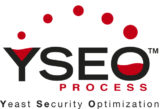Managing oxidative risk with biological tools – Glutastar™ in Pre-fermentation
Throughout winemaking, several steps are known as strategic key points where oxidation mechanisms can occur: transport of grapes, at pressing, stabulation, racking, at the beginning of AF, during cold stabilization, storage and transport. This Winemaking Update will focus on biological tools available to winemakers to control oxidation prior to the onset of alcoholic fermentation, more specifically on how the specific yeast derivative, Glutastar™ can support the process of managing oxidation in white and rosé wines in a strategy to reduce chemical intrant such as SO2.
WUP - Oxidation - Glutastar ENG



